Three relaxing days at Yangshuo Mountain Retreat
After the hustle and bustle of so many cities, and the daily inconvenience of a trip through the crazy Chinese traffic, Yangshuo (阳朔县, Yángshuò) was our retreat; a chance to sit back and relax. Yangshuo is famous for its extraordinary limestone karst mountains and it’s become an iconic image of China (it’s even on the 20 yuan note).
Yangshuo Mountain Retreat
After a quiet nothing-day in Chengdu we had an 8pm flight to Guilin and then a transfer to our hotel, Yangshuo Mountain Retreat. The drive took an hour, and we arrived in the dark just after midnight. Not wishing to inconvenience us we went straight to our room, check-in could wait until morning.
Up at 7am, we had an early start with a guide for a day of biking, rafting and hiking. I opened the curtains and was shocked by the astounding beauty of in front of me. The Yulong river ran just beneath our window, the sky was a clear deep blue and we were surrounded by mysterious limestone karst mountains, each uniquely sculpted over millennia. These reflected perfectly in the still river water, which flows gently and at this time in the morning is completely undisturbed. I shut the curtains again, so Sam could get the same big reveal.
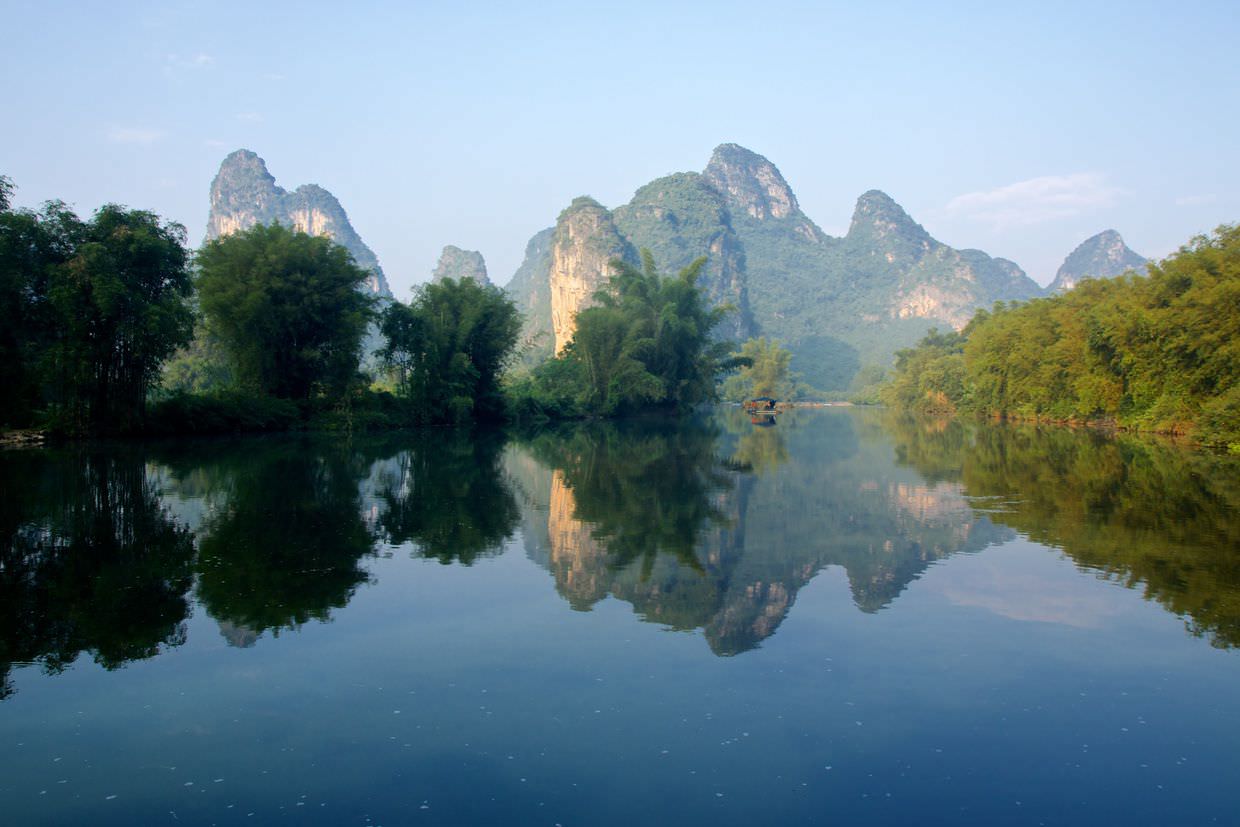
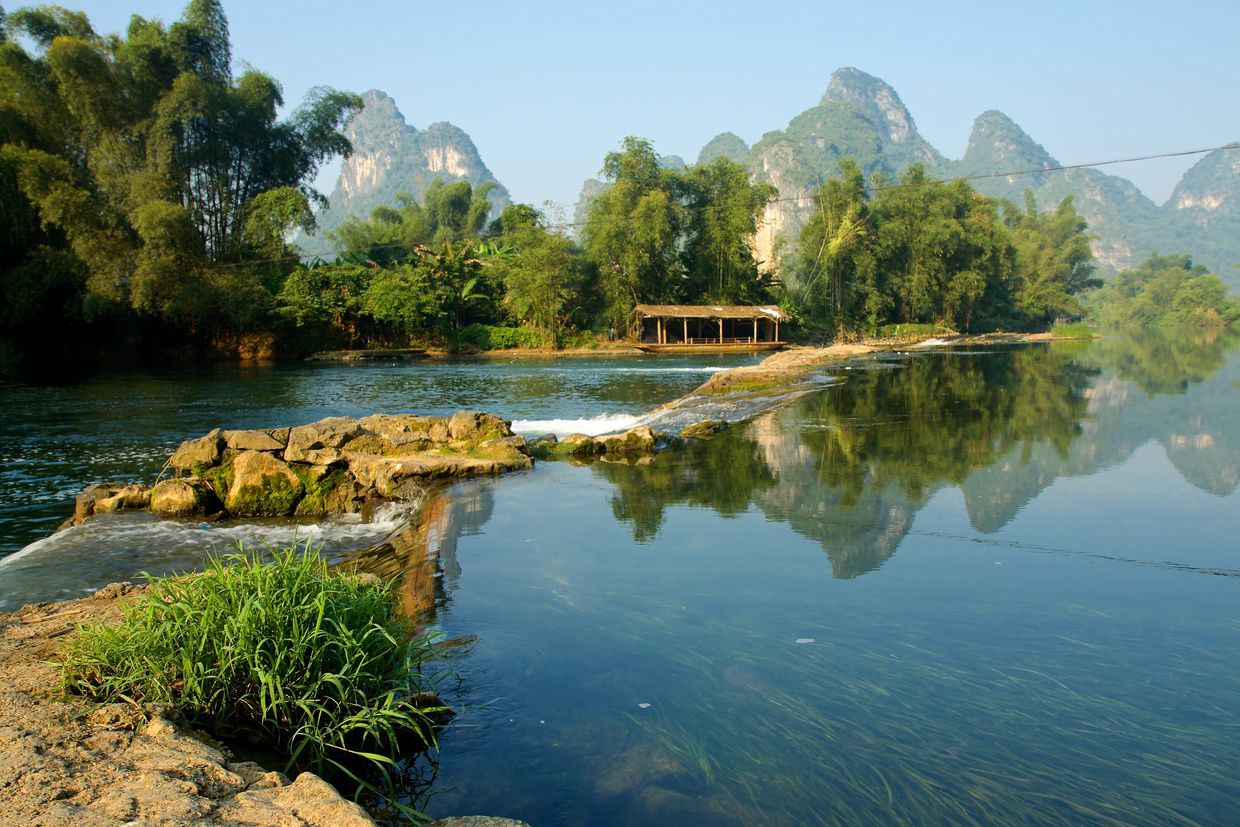
Yangshuo Mountain Retreat itself is nestled along the river, a luxury boutique hotel with only a few rooms. The rooms are wood panelled and smell beautifully of pine, some have a balcony but we were on the ground floor. Outside is a beautiful garden area, with young banyan trees and purple flowering shrubs, frequented by dragonflies and butterflies. By day you sit at the dining tables with a beer, waving by the bamboo rafts; at night it’s all lit up with lanterns. It’s eco friendly; no telephone, no TV, and locally made bamboo beds — they make their own furniture too. The hotel guidebook also includes a bio of each staff member, who seemed to all treat each other like family.
On a table by the river, after snapping some quick photos of the mountains and reflections, we chose from the a-la carte breakfast menu. French toast and mushroom omelette for me, and Guilin noodles with fried egg for Sam. A-la carte to avoid food waste. I try and steer clear of too many eggs while on holiday, but today I indulged. The food throughout was delicious.
Bikes and bamboo rafting on Yulong river
Our guide, Ming, picked us up and from the hotel we chose bikes for the day. My choice was poor; the squeaky front and back brakes could be combined to impersonate the noise of a dying donkey. But the bike ride was brief, half an hour at after starting, cycling past a few karst peaks and rice paddies, we were at the bamboo raft station. We arrived early and would be one of the first groups to set off downstream.
After Sam had bought a conical straw hat (which we carried about the rest of China, and now sits on our bookshelf) we clambered into seats at the rear of our raft. The raft is comprised of 10 bamboo tubes tied together, rising slightly at the ends. The seats are simple metal frames with a cushion, space for a parasol and hooks for bags. It’s all a bit like punting, or gondolas, with another stick of bamboo our driver pushed off and we headed downstream. The trip would take 1h30, and it took us back past our hotel, down the Yulong river towards moon hill.
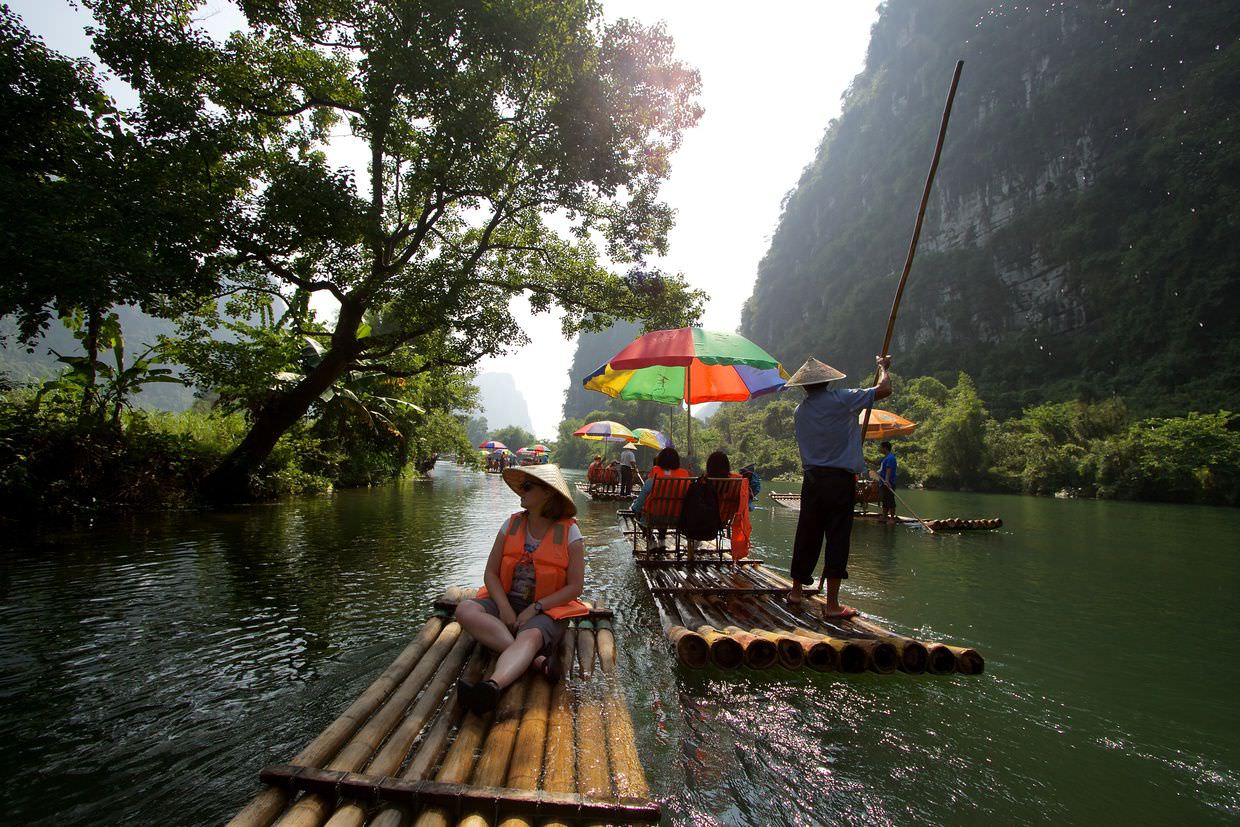
I imagined a scenic landscape, still, quiet and empty. I couldn’t have been more wrong. Soon enough we joined the procession of Chinese tourists on their bamboo boats. Not the idyllic experience I had expected, but this was fun in itself. Some were having water fights, many climbed about the boat taking pictures from different angles — it seems it’s more stable than it looks, and then we were serenaded, all the boats around us joined in song — some Chinese folk tune everyone but us knew.
The river is mostly quiet, but every few hundred metres there’s a little foot high waterfall. The raft tilts over the edge and the front plunges into the level below, sending water splashing everywhere. We lifted up our legs to avoid it at first, but later we just let the cold water cool us down, there’s precious little shade out on the water.
Moon hill
At the end there are tractors that take towers of bamboo boats back upstream where they’ll start all over again. These tractors also brought our bikes back to us, and we cycled onwards to moon hill. On the way Ming tried to sell us more attractions, some caves here, a tree there, a show tonight. We did go and see the 1400 year old Banyan tree, not worth the entry fee but interesting nonetheless. It was so old it had grown its own supports.
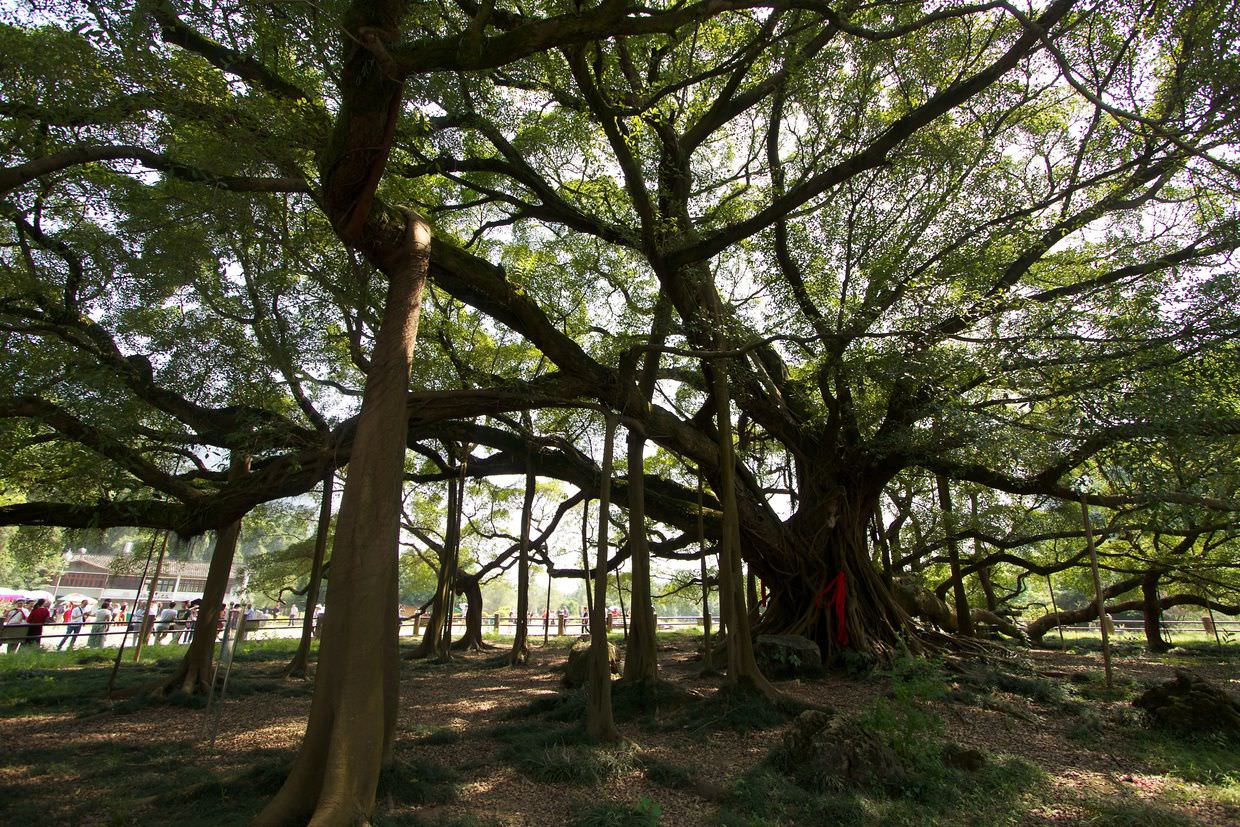
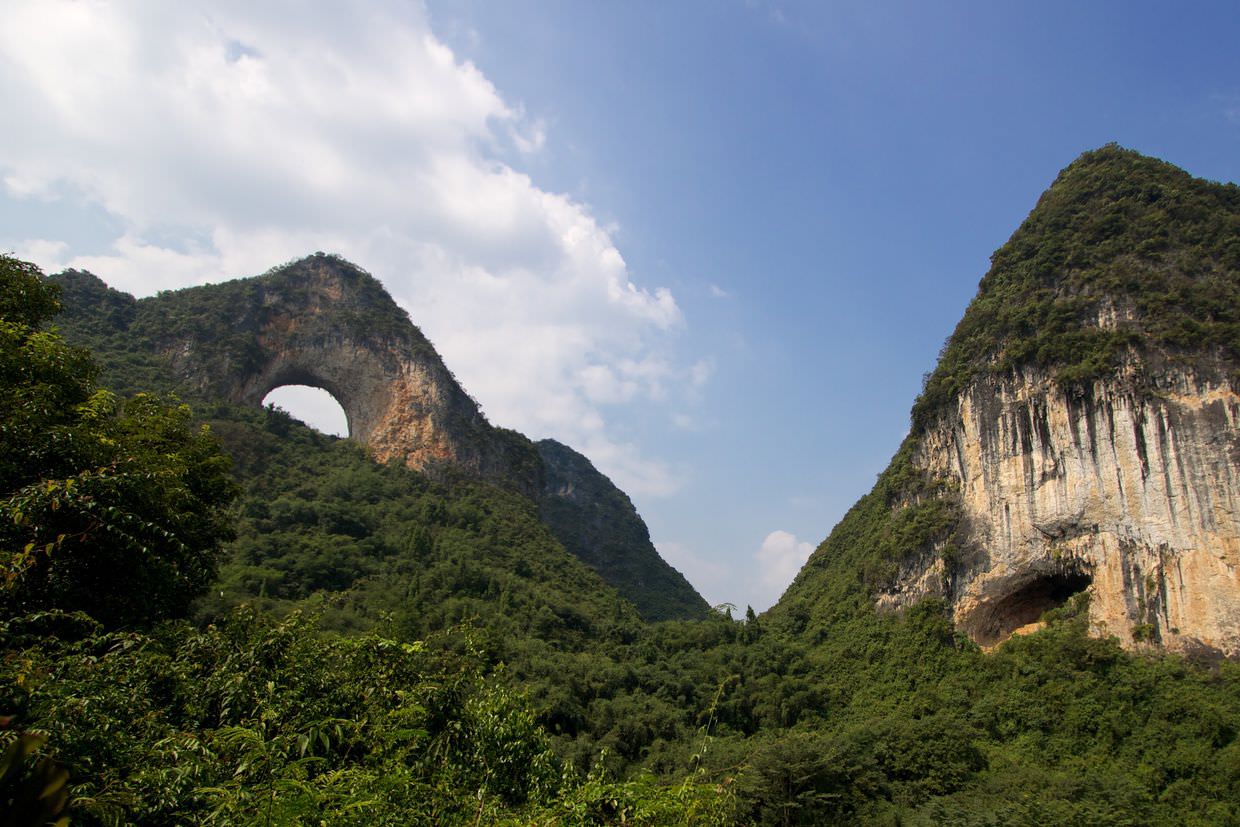
Moon hill is a limestone karst mountain with a big moon shaped hole at the top of it. Depending on where you stand the moon appears to be in different phases. After lunch at the bottom, in a small cafe where we argued with each other over aubergines that were too fatty, we begun the uphill hike to the top.
The climb takes about an hour, and we, as always seems to be the case, were climbing at the hottest part of the day. But it’s not too bad, there’s shade for most of the way and we had our trusty and popular Chinese chocolate bars at the ready (Snickers — they’re everywhere, must be the peanuts).
At the top we found stunning hazy panoramas of limestone karst mountains in the afternoon sun. Into the distance they disappeared, it looked like the back of a giant sleeping crocodile. From the viewpoint there’s a small trail that takes you out the back, for even more spectacular views. And there are more secrets too; a little mud trail with a warning not to enter is rumoured to take you up to the top. We didn’t try it.
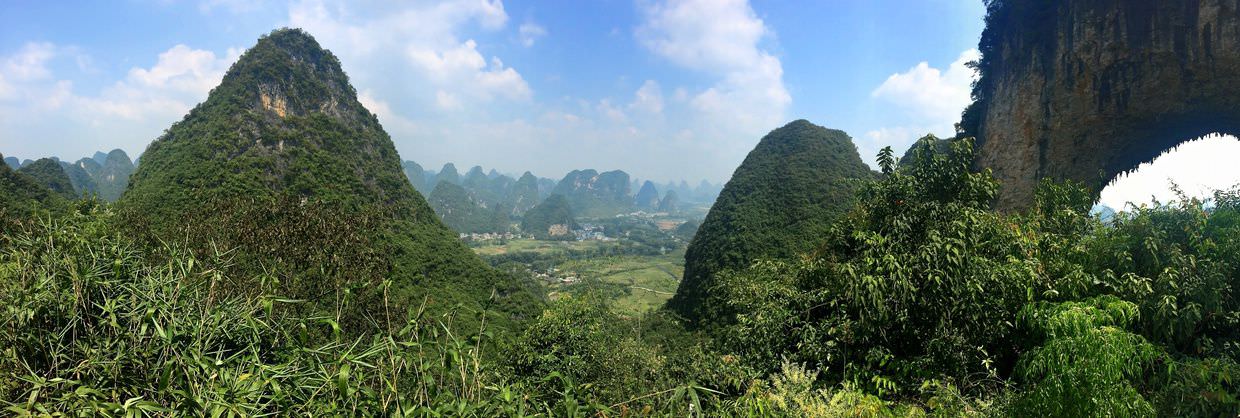
At the bottom, after we’d meandered back down and taken some photos of large bamboo plants, we met Ming again and got back on our bikes to ride home to the hotel. We took a pit stop for some cheap mango ice creams, then headed back through the countryside. All in all we only cycled for an hour or so and by the end we had much of the afternoon left to fill.
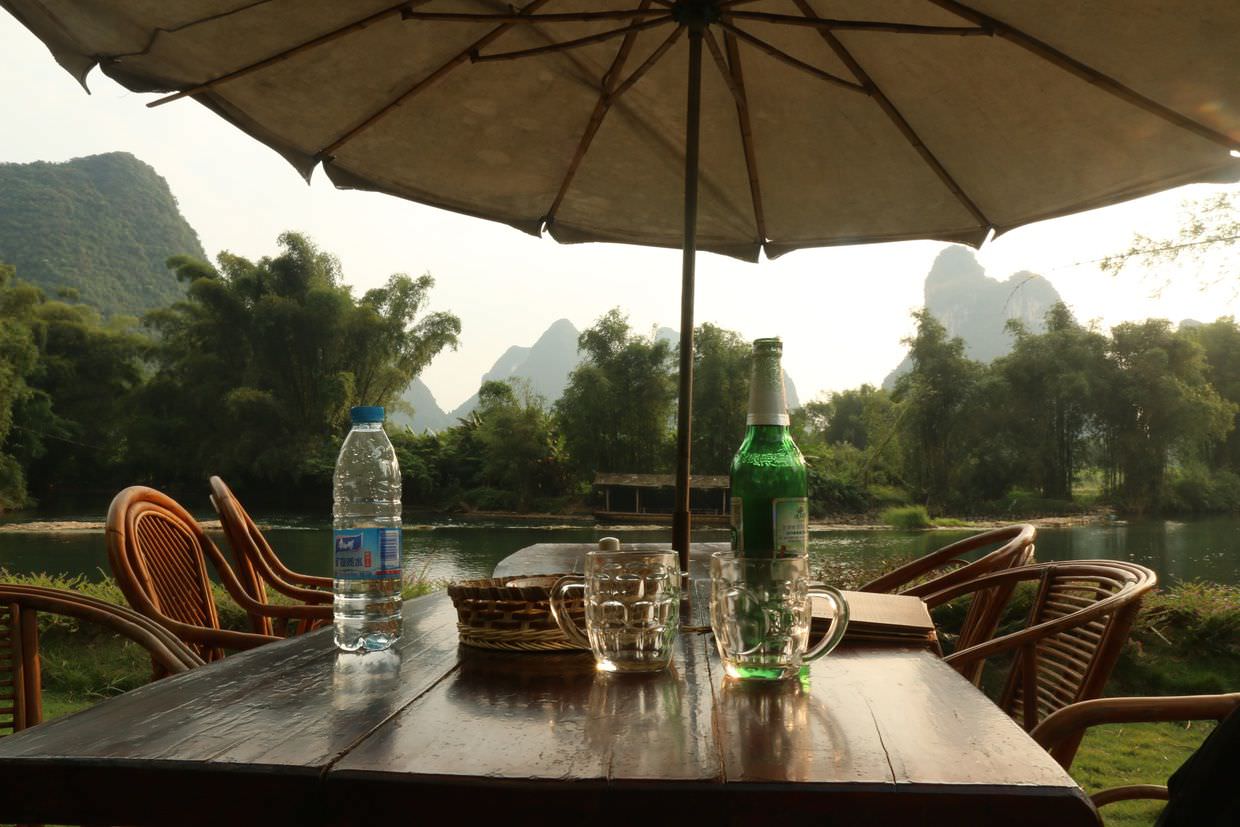
Good food and prosecco
By the river we considered what to do with our time here. We could see the famous Sanjie Liu evening show — but its a long drive, and the reviews said the Chinese audience could be really irritating. We could do a cooking course, or go into town, or …? Tonight we opted for the best thing you can do in Yangshuo, especially at a place like our hotel, nothing.
We spent a few hours watching the sunset from a table by the river, a cold local beer in hand. Then as the light was right we used tripods to try and capture the moment.
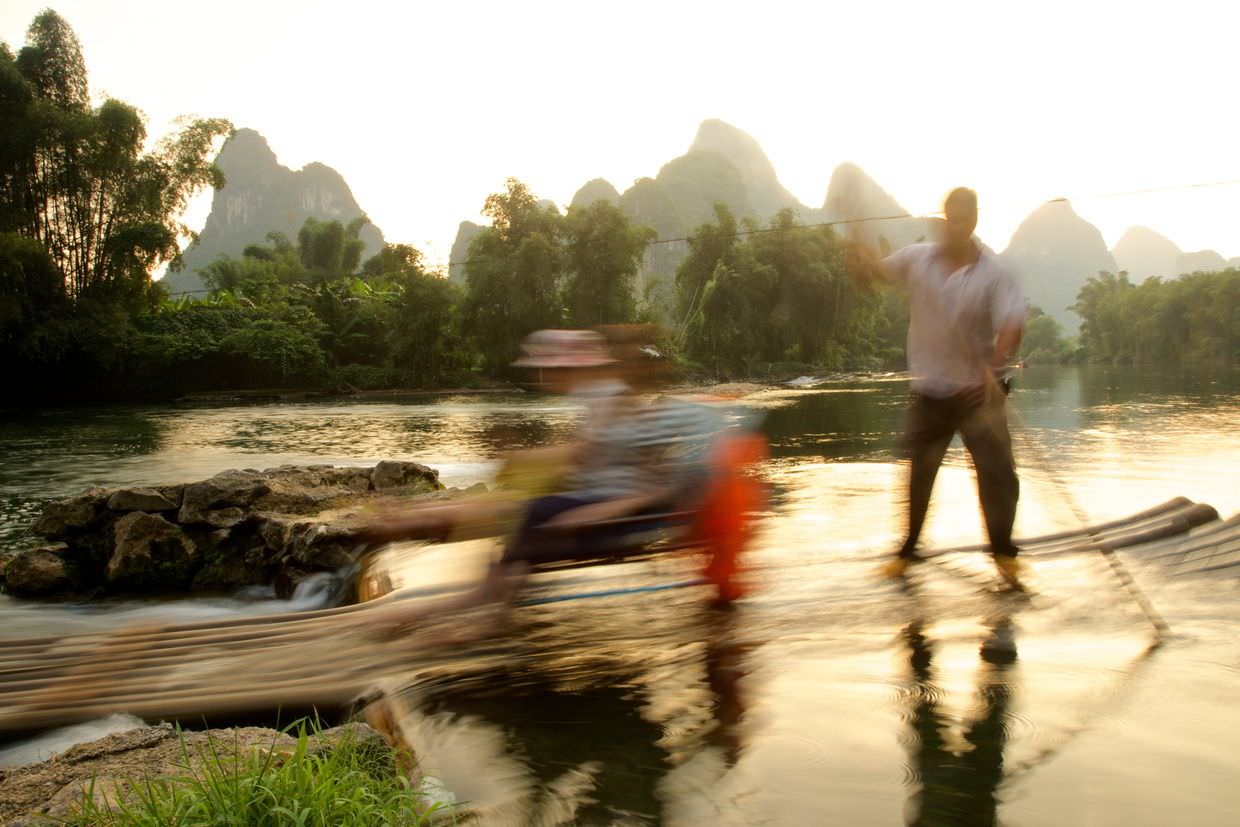
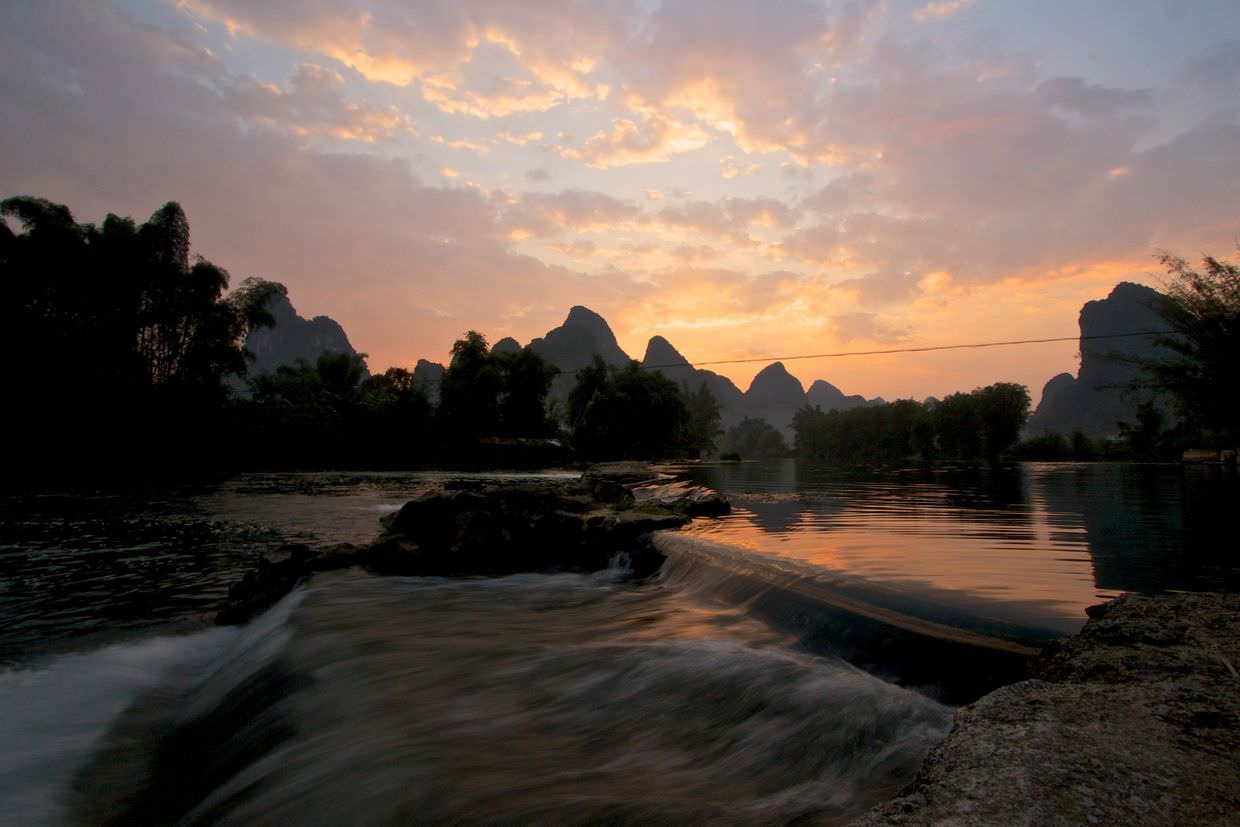
By the time it was dark we were hungry, and the hotel was the perfect setting for a riverside romantic meal. With a bottle of Prosecco (why not? It cost the same as the wine). We shared a Gongbao chicken dish and a ginger fried duck one, with some local fried rice (a little odd because it contained gherkins) and then a chocolate hazelnut dessert. With our remaining bubbly we slouched on the comfy outdoor sofas and finished off the bottle. This place is magical.
